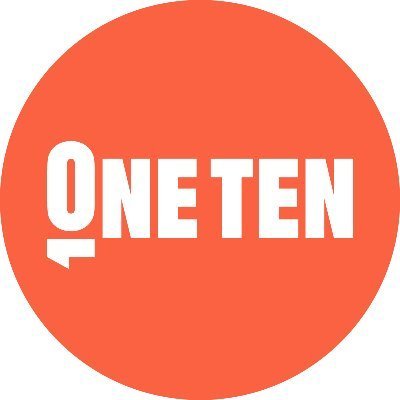Map icons
Twelve states
Twelve states across the nation, from nearly all regions and regardless of political party control, have enacted FAFSA completion policies to require or encourage high school seniors to file the form.⁶⁰ Most states have developed a multipronged effort with statewide outreach, student support, K−12 training, data sharing, and highlighted best practices.
The Atlanta Wealth Building Initiative
The Atlanta Wealth Building Initiative established a new framework for community leaders, researchers, policymakers, practitioners and philanthropists to advance solutions to build Black wealth in the region.¹⁵⁰
Atlanta, Georgia
OneTen
OneTen seeks to create 1 million jobs in 10 years to unlock opportunities for Black learners and workers. Employers and community partners provide support, training, and hiring to close gaps in the Black talent pipeline.¹⁴⁹
Washington, D.C
The Scholarship Academy
The Scholarship Academy supports Black learners in Georgia, New York, and Washington D.C., helping students from low-wealth backgrounds navigate financial aid and access scholarships.¹⁴⁷
Atlanta, Georgia
The National Action Council for Minorities in Engineering
The National Action Council for Minorities in Engineering offers $3 million in scholarships to underrepresented minorities pursuing engineering.¹⁴⁵
Additionally, the Executive Leadership Council seeks to expand Black executives and offers scholarships to Black learners.¹⁴⁶
Alexandria, Virginia
Internal Revenue Service
Since 2009, the Internal Revenue Servicedata retrieval matchprocess has improved, reducing both the number of FAFSA questions students and parents must complete and the burden of providing verification of eligibility.¹¹⁵
Washington, D.C
U.S Department of Education
The U.S. Department of Education updated its student loan management provisions to increase the accountability of servicers, allow borrowers to access their loans through a centralized website, and reduce disruptions from account transfers.¹¹³ This is especially important to ensure Black borrowers, half of whom report that their loan debt is more than their net worth, can access repayment benefits.¹¹⁴
Washington, D.C
FAFSA
The recent overhaul of the FAFSA application streamlines the process and expands access to Pell Grants, starting with the 2024−25 application.¹¹¹ As Black learners are more likely to receive the Pell Grant, these improvements are critical.¹¹²
Washington, D.C
Washington
Washington has:
A need-based grant entitlement program that covers short-term credentials and degrees, serves low- and middle income students, and provides generous award amounts.⁶⁴
Invested $22 million to create community partnerships supporting underrepresented students to expand enrollment and credential completion.73 In addition, the state established a permanent legislative committee the Educational Opportunity Gap Oversight and Accountability Committee to recommend strategies to state education agencies and develop policy reforms.⁷⁴
Enacted legislation creating a permanent faculty professional development program focused on diversity, equity, inclusion, and antiracism. In addition, the Washington community college system created a college faculty consortium that is working to change teaching and writing assessments to be free of negative racial biases.⁹⁸
A large technology employers that supported a tax for businesses that rely on employees with advanced degrees to partially fund the statewide guaranteed financial aid program.¹⁴⁸
Olympia, Washington
New Jersey
New Jersey has:
Created an online navigation tool to connect college students to basic needs resources.
Enacted legislation to protect students from tuition increases deemed unreasonably high, based on anticipated wages and the ability to repay. Agencies are required to develop minimum performance standards for short term career programs.⁷¹
Trenton, New Jersey
Minnesota
Minnesota offers comprehensive investments to address affordability. In addition to a robust need-based aid program, the state invested in housing, emergency aid, student parents, and student hunger programs.⁶²
Saint Paul, Minnesota
Louisiana
Louisiana implemented outcomes-based funding in 2010 and has incorporated student-centered adjustments into the model. Institutions that improve credential completion among underrepresented minority (URM) students and achieve URM enrollments above the state average are compensated to provide them with additional capacity to improve outcomes.⁶¹
Baton Rouge, Louisiana
Illinois
Illinois has enacted legislation to establish a public university funding model that is grounded in equity and adequacy. The statutory charge calls for a data-driven approach that adequately, equitably, and stably funds public universities, including a direction to remediate disparities in access, affordability, and completion for underrepresented students.⁵⁹
Springfield, Illinois
The University of Texas System
The University of Texas System created a data dashboard on educational and career outcomes for specific student groups. SeekUT was one of the first systems in higher education to launch an online resource to provide salary and debt statistics of actual students by degree major, providing transparency and helping students make informed decisions about their educational careers.¹⁷
Austin, Texas
University of Maryland, Baltimore County
University of Maryland, Baltimore County has focused on increasing enrollment of Black learners for decades and offers targeted scholarships. Black learners account for 24% of the institution’s enrollment.¹⁶
Baltimore, Maryland
Compton College
Compton College takes a data-driven, student-informed, comprehensive approach to basic needs. Black learners comprise 24% of the college’s student body.¹⁵ Compton’s basic needs efforts include partnering with a community development organization to address housing, streamlining processes to access resources, and hiring a basic needs director.
















